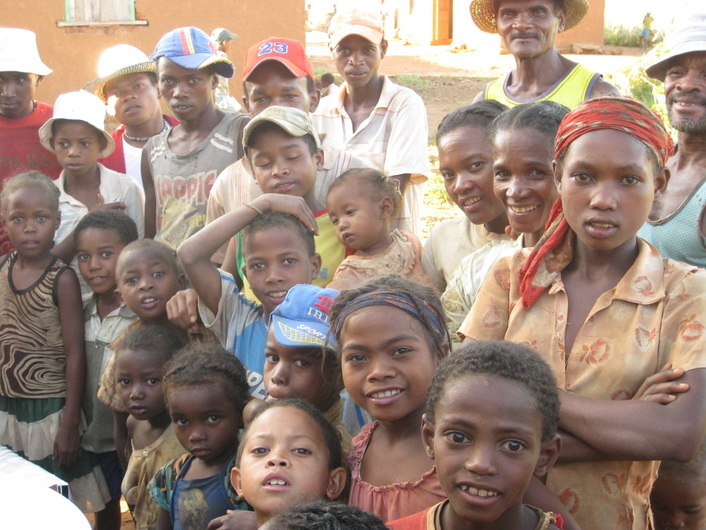 Villagers from Fiadanana, gathered to hear about solar cooking
Villagers from Fiadanana, gathered to hear about solar cooking It was a quick decision just before I left Berkeley, to pay a visit to Madagascar. Like many people, I was aware of the exotic uniqueness of the flora, fauna and human culture, but it hadn’t been on my radar as a place for Solar Roots, (my new nom de plume), to operate. This is what I found:
Madagascar is the world’s oldest island and its fourth largest in size. It used to be literally jammed in between Africa and India, back when Gondwana was a going concern. Of the 200,000 forms of flora and fauna, a staggering 150,000 are found nowhere else on earth. The Malagasy people first arrived 2,000 years ago and are a mixture of immigrants from what is today Indonesia/Malaysia and the African continent. The culture and the features of the people are a rich mélange reflecting now one backgound, then the other.
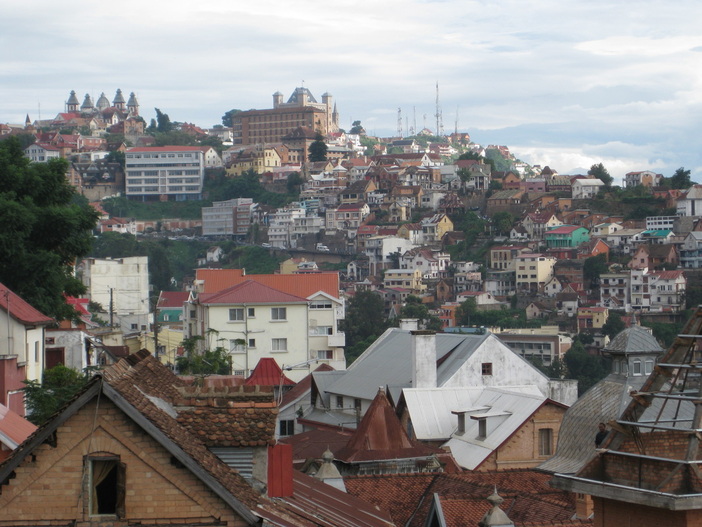 Antananarivo, or Tana, looking towards the Rova, (former Royal Palace)
Antananarivo, or Tana, looking towards the Rova, (former Royal Palace) After about two days of Tana’s appalling air quality, its hordes of street beggars and hustlers, its ever-present poverty and crime rate, one is ready to take off to gentler climes. That may be the easy way, but it’s not the Solar Roots way! I had to stick it out in grimy Tana for another six weeks. The reason being, I had agreed to get some new innovative solar cookers out of Customs and to demonstrate them to interested parties. I might as well have agreed to run for President of Madgascar, with as much hope of success in the allotted time! By the way, the post of President of Madagascar is available. More on the solar cooker saga and the current illegitimate regime later.
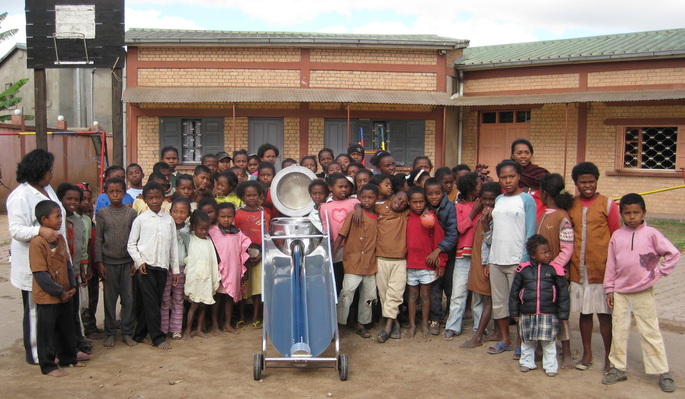 The Akany Tafita teachers and kids pose with one of the solar cookers
The Akany Tafita teachers and kids pose with one of the solar cookers 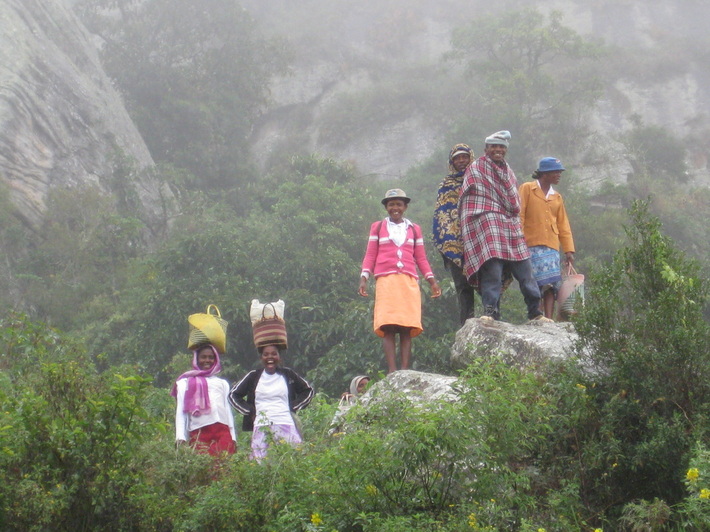 Some folks, homeward bound from the market, appear out of the mist
Some folks, homeward bound from the market, appear out of the mist 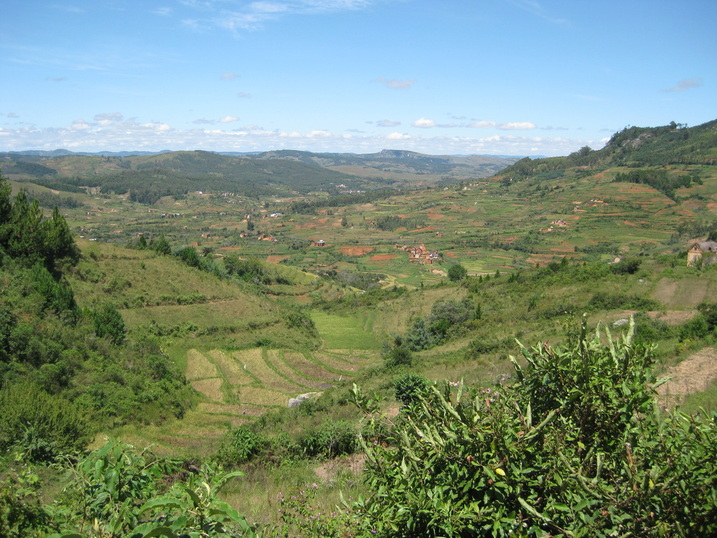 In the Hauts Plateaux on the way south to Fianarantsoa
In the Hauts Plateaux on the way south to Fianarantsoa 
 RSS Feed
RSS Feed